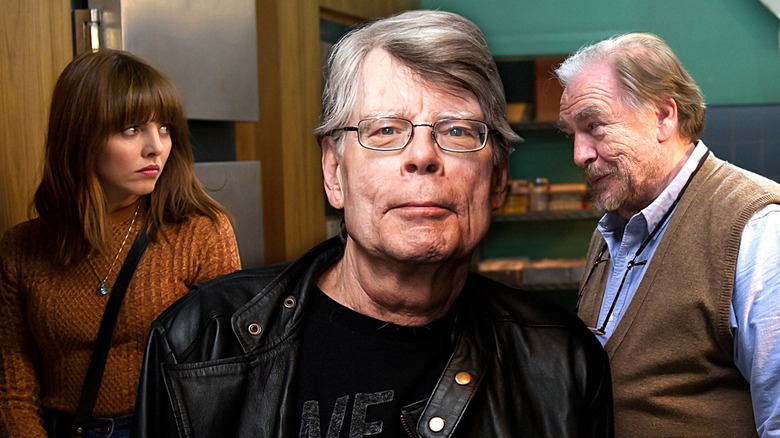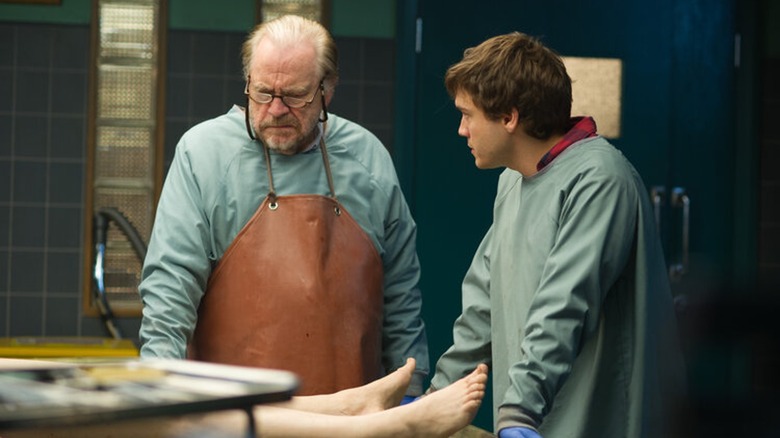Stephen King typically takes to Twitter (I am by no means going to name it that different factor) to provide us well timed film and collection suggestions, spotlight under-the-radar gems, or just specific the enjoyment of studying a great e-book. As one of many world’s best authors, King intimately understands the interior workings of the horror style, together with themes that work greatest to impress the human creativeness and induce nervousness with the assistance of a sustained suspension of disbelief. The author’s horror-related suggestions have all the time been prime notch; a number of years again, King praised a 2016 supernatural horror movie on Twitter and suggested us to not watch it alone:
“THE AUTOPSY OF JANE DOE: Visceral horror to rival ALIEN and early Cronenberg. Watch it, however not alone.”
He is proper. André Øvredal’s “The Post-mortem of Jane Doe,” which we reviewed upon launch, understands that the gnarliest type of horror lies within the unraveling of a easy premise, the place essentially the most jarring facet is just not the leap scares or the gore, however the futility of going up in opposition to a cycle of trauma that may’t be stopped. One of many issues Øvredal’s first English-language movie does greatest is just not absolutely lean into the sensationalism of all of it, however go for a taut, reined-in fashion as a substitute, which helps maintain a way of claustrophobic dread whereas the terrors ramp up. Let’s dissect what makes “The Post-mortem of Jane Doe” so scary, and why it deserves a extra nuanced highlight virtually half a decade after its launch.
The Post-mortem of Jane Doe provides a chilling horror premise
When the corpse of the titular Jane Doe (performed by Olwen Kelly) is discovered on the scene of a criminal offense, coroners Austin (Emile Hirsch) and Tommy (the nice Brian Cox, whose greatest motion pictures we ranked right here) are introduced in for a last-minute post-mortem to determine the reason for the sufferer’s loss of life. The daddy-son duo confine themselves inside a morgue in small-town Virginia and regularly peel again the layers of a horrific crime, the place the clues current themselves within the type of a severed tongue, shattered wrist bones, and a lacking molar. A way of bafflement settles in because the physique exhibits no indicators of rigor mortis, making it unattainable to discern the time of loss of life, however this confusion morphs into pure terror when the corpse shows indicators of life that change into unattainable to be disregarded as a scientific phenomenon.
If the exterior indicators of trauma and refined motion weren’t disturbing sufficient, the state of the interior organs denotes one thing deeply sinister. Because the post-mortem progresses, Tommy and Austin’s quick actuality adjustments, actively placing them and their family members at risk as they attempt to resolve the puzzle items that Jane Doe’s corpse presents within the type of more and more regarding clues.
The disenfranchisement that comes with loss of life is an extension of Jane Doe’s existence when she was alive: Even now, her trauma is being poked and prodded by males who solely view her as proof, who strategy the battered facets of her corpse with scientific detachment. After all, each Tommy and Austin are coroners — professionals who want to take care of an goal stance that depends upon that scientific stage of discernment — however their preliminary reluctance to entertain supernatural phenomena or acknowledge the ritualistic undertones of her trauma emerge as obstacles to the detachment that is demanded of them. The climax is pure motion, which feels considerably antithetical to the temper established main as much as that second, however it turns into clear that nobody can stand between Jane Doe and her wrath, even when they harbor benign intentions. In the long run, solely revenge and tragedy prevail. No marvel Stephen King discovered it worthy to suggest.

